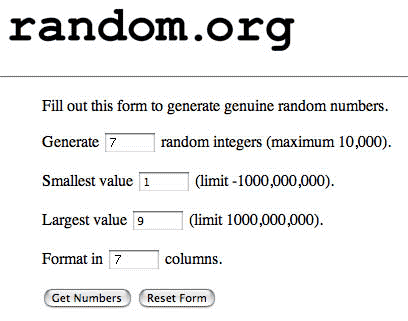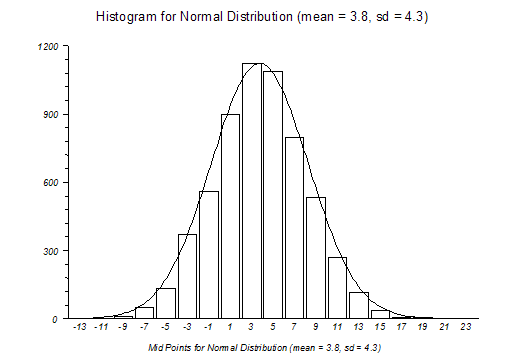 All papers examples
All papers examples
Disciplines

- MLA
- APA
- Master's
- Undergraduate
- High School
- PhD
- Harvard
- Biology
- Art
- Drama
- Movies
- Theatre
- Painting
- Music
- Architecture
- Dance
- Design
- History
- American History
- Asian History
- Literature
- Antique Literature
- American Literature
- Asian Literature
- Classic English Literature
- World Literature
- Creative Writing
- English
- Linguistics
- Law
- Criminal Justice
- Legal Issues
- Ethics
- Philosophy
- Religion
- Theology
- Anthropology
- Archaeology
- Economics
- Tourism
- Political Science
- World Affairs
- Psychology
- Sociology
- African-American Studies
- East European Studies
- Latin-American Studies
- Native-American Studies
- West European Studies
- Family and Consumer Science
- Social Issues
- Women and Gender Studies
- Social Work
- Natural Sciences
- Anatomy
- Zoology
- Ecology
- Chemistry
- Pharmacology
- Earth science
- Geography
- Geology
- Astronomy
- Physics
- Agriculture
- Agricultural Studies
- Computer Science
- Internet
- IT Management
- Web Design
- Mathematics
- Business
- Accounting
- Finance
- Investments
- Logistics
- Trade
- Management
- Marketing
- Engineering and Technology
- Engineering
- Technology
- Aeronautics
- Aviation
- Medicine and Health
- Alternative Medicine
- Healthcare
- Nursing
- Nutrition
- Communications and Media
- Advertising
- Communication Strategies
- Journalism
- Public Relations
- Education
- Educational Theories
- Pedagogy
- Teacher's Career
- Statistics
- Chicago/Turabian
- Nature
- Company Analysis
- Sport
- Paintings
- E-commerce
- Holocaust
- Education Theories
- Fashion
- Shakespeare
- Canadian Studies
- Science
- Food Safety
- Relation of Global Warming and Extreme Weather Condition
Paper Types

- Movie Review
- Essay
- Admission Essay
- Annotated Bibliography
- Application Essay
- Article Critique
- Article Review
- Article Writing
- Assessment
- Book Review
- Business Plan
- Business Proposal
- Capstone Project
- Case Study
- Coursework
- Cover Letter
- Creative Essay
- Dissertation
- Dissertation - Abstract
- Dissertation - Conclusion
- Dissertation - Discussion
- Dissertation - Hypothesis
- Dissertation - Introduction
- Dissertation - Literature
- Dissertation - Methodology
- Dissertation - Results
- GCSE Coursework
- Grant Proposal
- Admission Essay
- Annotated Bibliography
- Application Essay
- Article
- Article Critique
- Article Review
- Article Writing
- Assessment
- Book Review
- Business Plan
- Business Proposal
- Capstone Project
- Case Study
- Coursework
- Cover Letter
- Creative Essay
- Dissertation
- Dissertation - Abstract
- Dissertation - Conclusion
- Dissertation - Discussion
- Dissertation - Hypothesis
- Dissertation - Introduction
- Dissertation - Literature
- Dissertation - Methodology
- Dissertation - Results
- Essay
- GCSE Coursework
- Grant Proposal
- Interview
- Lab Report
- Literature Review
- Marketing Plan
- Math Problem
- Movie Analysis
- Movie Review
- Multiple Choice Quiz
- Online Quiz
- Outline
- Personal Statement
- Poem
- Power Point Presentation
- Power Point Presentation With Speaker Notes
- Questionnaire
- Quiz
- Reaction Paper
- Research Paper
- Research Proposal
- Resume
- Speech
- Statistics problem
- SWOT analysis
- Term Paper
- Thesis Paper
- Accounting
- Advertising
- Aeronautics
- African-American Studies
- Agricultural Studies
- Agriculture
- Alternative Medicine
- American History
- American Literature
- Anatomy
- Anthropology
- Antique Literature
- APA
- Archaeology
- Architecture
- Art
- Asian History
- Asian Literature
- Astronomy
- Aviation
- Biology
- Business
- Canadian Studies
- Chemistry
- Chicago/Turabian
- Classic English Literature
- Communication Strategies
- Communications and Media
- Company Analysis
- Computer Science
- Creative Writing
- Criminal Justice
- Dance
- Design
- Drama
- E-commerce
- Earth science
- East European Studies
- Ecology
- Economics
- Education
- Education Theories
- Educational Theories
- Engineering
- Engineering and Technology
- English
- Ethics
- Family and Consumer Science
- Fashion
- Finance
- Food Safety
- Geography
- Geology
- Harvard
- Healthcare
- High School
- History
- Holocaust
- Internet
- Investments
- IT Management
- Journalism
- Latin-American Studies
- Law
- Legal Issues
- Linguistics
- Literature
- Logistics
- Management
- Marketing
- Master's
- Mathematics
- Medicine and Health
- MLA
- Movies
- Music
- Native-American Studies
- Natural Sciences
- Nature
- Nursing
- Nutrition
- Painting
- Paintings
- Pedagogy
- Pharmacology
- PhD
- Philosophy
- Physics
- Political Science
- Psychology
- Public Relations
- Relation of Global Warming and Extreme Weather Condition
- Religion
- Science
- Shakespeare
- Social Issues
- Social Work
- Sociology
- Sport
- Statistics
- Teacher's Career
- Technology
- Theatre
- Theology
- Tourism
- Trade
- Undergraduate
- Web Design
- West European Studies
- Women and Gender Studies
- World Affairs
- World Literature
- Zoology
Building ‘Learner-Centered’ Curricula, Essay Example
Hire a Writer for Custom Essay
Use 10% Off Discount: "custom10" in 1 Click 👇
You are free to use it as an inspiration or a source for your own work.

Since the 1990s, the formative trend in education toward ‘learner-centered’ models of classroom facilitation in the teaching and training fields has done much to benefits students with developmental disabilities (Reynolds, 2000). While most recommended best practices in regard to student performance advance standardization as solution, special needs learners show strongest potential in modified programs toward integration into standardized praxis. As new tools find their way into pedagogical applications, informal assessment of students identified to have special learning needs can benefit greatly from alternative modalities in instructional evaluation. Following the work of Swiss Psychoanalyst, Carl Jung, and American Psychologist Isabel Meyers (1995), the foregoing informal assessment is designed to measure Myers-Briggs Type Indicator (MBTI) in the psychometric framework for instructional development. Utilizing memory testing by way of both audio and visual memorization articulated in self-reporting by students.
Based on the ‘Think Aloud’ oral response model, data drawn from the informal memory test serves to delineate the student’s style of learning and responsiveness to numeracy. Findings to the in class evaluation record individual strengths in learning – audio, visual inductive, and visual deductive (i.e. semiotic meaning) reasoning. Outcomes to the assessment can be integrated into curricula to better effectiveness of teaching, by way of discernment of individual cognitive behavior into strategies designed to reach a continuum of learners: 1) Extraversion – Introversion; 2) Sensing – Intuition; 3) Thinking – Feeling; and 4) Judging – Perceiving.
Upon proposition, the distinction between auditory memory and visual memory seems without bias. Most people have a general tendency to recollect information more effectively via one medium of sensory intake over another. In the special education classroom, ‘learning types’ may include auditory, visual and tactile cognitive development. The informal assessment employs numbers – symbols with abstract and semantic meaning. The assessment requests that participant students memorize numerical sequences in a pictogram, with repetition in audio transmission of the same inference. The number sequences can be selected from the random number generator illustrated in Figure 1.
Figure 1

Figure 1: Random Number Generator
A simple associate memory test consisting of visual and auditory retention of sequences of seven (7) digits both heard and read, the series of numbers presented by the database are transferred to both an index card and to SPSS by the educator, for retention of each numerical sequence. The below data table illustrated in Figure 2 can be utilized to record correct answers by each student, in each modality of the memory assessment.
Figure 2
| Number of Correct Answers | |
| Visual Memory Test | Auditory Memory Test |
Figure 2: Data Table
The visual memory assessment is done by showing the student a single card for 30 seconds, followed by removal of the card, and implementation of an ‘organic’ control: oral recitation of the alphabet. The numbers are then requested post interruption. The number of correct answers should be recorded. Consecutive application of the auditory assessment with each student is conducted in the same format.
Results from the assessment can be calculated according to the percentage of people correlated to each score will serve to analyze the preliminary data. The formula for the calculation: C / N (100) = P. By adding total number of participants for each column, followed by division of the number of people in receipt of that score by the total number of participants in the study, the educator should multiply the answer by 100 to get the percentage.
To illustrate aggregate distribution within the class, the educator may put the outcomes into a histogram for reporting on median memory in each modality within the findings. Figure 3 represents a normal histogram graph to be used in dissemination of the study’s outcomes with the Y-axis on the left side of the graph as a scale for the percentage of people from 0 to 100%, and on the bottom a scale for the number of correct responses from 0 to 7.
Figure 3

Figure 3: Normal Histogram
The informal assessment recommended in this prospectus draws upon rather non-traditional, yet scientifically verifiable ideas about approaches to cognitive retention discussed in neuroscience and psychology. The memory assessment offers an associated learning format for interpretation of analytical capacity beyond inductive reason. Evolution of recommended best practices in curricula design (i.e. visual media formats and new technologies) and individual learning plans based on interactive growth are but a few of the steps toward integration of students with developmental disabilities into traditional school environments. While far from depth testing of cognitive capacity, the incorporation of statistical tools in this modified evaluation approach encourages educators to look to non-standardized tools as vehicles for building an integrated model of ‘learner-centered’ instruction; and with an eye toward improvement of student performance.
Works Cited
Meyers, S. (1995). Gifts Differing: Understanding Personality Type. Mountain View, CA: Davies-Black Publishing.
Reynolds, J. (2000). Learning-Centered Learning: Theory Into Practice. Inquiry, 5 (2), Fall 2000. Retrieved from: http://www.vccaedu.org/inquiry/inquiry-fall2000/i-52-reynolds.html

Stuck with your Essay?
Get in touch with one of our experts for instant help!
Tags:

Time is precious
don’t waste it!
writing help!


Plagiarism-free
guarantee

Privacy
guarantee

Secure
checkout

Money back
guarantee

